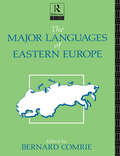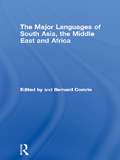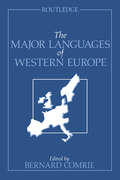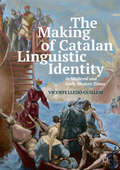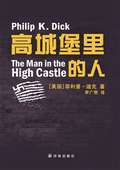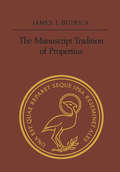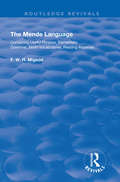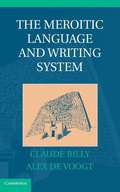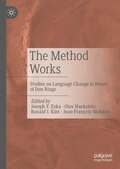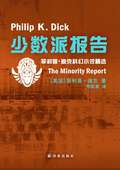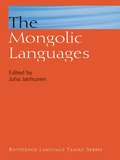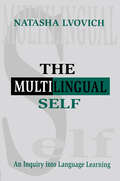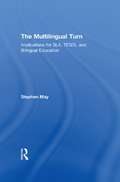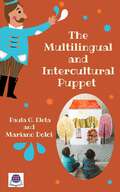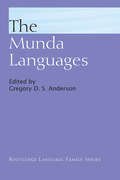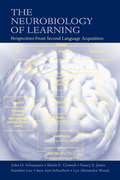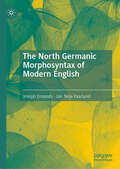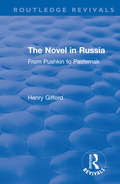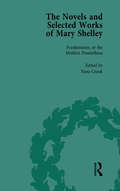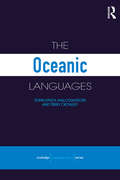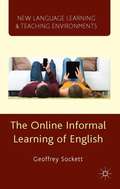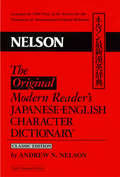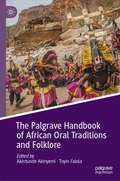- Table View
- List View
The Major Languages of Eastern Europe (The\major Languages Ser.)
by Bernard ComrieFirst published in 2003. Routledge is an imprint of Taylor & Francis, an informa company.
The Major Languages of South Asia, the Middle East and Africa (The\major Languages Ser.)
by Bernard ComrieBased on the much-praised The World's Major Languages, this is the first comprehensive guide in paperback to describe the development, grammar sound and writing system, and sociological factors of the major language families in these areas.
The Major Languages of Western Europe
by Bernard ComrieBased on Bernard Comrie's The World's Major Languages, this is a key guide to one of the major language families. The areas covered include Germanic languages, English, and Romance languages.
The Making of Catalan Linguistic Identity in Medieval and Early Modern Times
by Vicente Lledó-GuillemThe historical relationship between the Catalan and Occitan languages had a definitive impact on the linguistic identity of the powerful Crown of Aragon and the emergent Spanish Empire. Drawing upon a wealth of historical documents, linguistic treatises and literary texts, this book offers fresh insights into the political and cultural forces that shaped national identities in the Iberian Peninsula and, consequently, neighboring areas of the Mediterranean during the Middle Ages and the Early Modern Period. The innovative textual approach taken in these pages exposes the multifaceted ways in which the boundaries between the region’s most prestigious languages were contested, and demonstrates how linguistic identities were linked to ongoing struggles for political power. As the analysis reveals, the ideological construction of Occitan would play a crucial role in the construction of a unified Catalan, and Catalan would, in turn, give rise to a fervent debate around ‘Spanish’ language that has endured through the present day. This book will appeal to students and scholars of historical linguistics, sociolinguistics, Hispanic linguistics, Catalan language and linguistics, anthropological linguistics, Early Modern literature and culture, and the history of the Mediterranean.
The Man in the High Castle (Mandarin Edition)
by Philip K. DickIt's America in 1962. Slavery is legal once again. The few Jews who still survive hide under assumed names. In San Francisco, the I Ching is as common as the Yellow Pages. All because some twenty years earlier the United States lost a war--and is now occupied by Nazi Germany and Japan.小说以 易经 牵引情节 通过对不同阶层,不同身份的人物的穿插描述 讲述了一个反转过来的 历史----同盟国在二战中战败 美国被德国和日本分割霸占 探讨了正义与非正义,文化自卑和身份认同 以及法西斯独裁和种族歧视给人类社会造成的后果 通过对一系列不同人物的塑造 菲利普*迪克讲述了真实和虚幻的生活及历史
The Manuscript Tradition of Propertius
by The Estate of James ButricaThe elegist Sextus Propertius (ca 50-ca 16 BC) is generally reckoned among the most difficult of Latin authors. At the root of this difficulty lies a deeply corrupt text and uncertainty over the manuscript transmission; moreover, the manuscripts used in the standard editions of today have been selected without a comprehensive examination of the surviving copies. This study, the fullest survey of the manuscripts so far, considers the affiliation of more than 140 complete or partial witnesses and offers a thorough reassessment of the tradition. The principal novelty is the argument that six Renaissance copies represent an independent third witness to the archetype, revealing passages where corruptions, glosses, or medieval corrections are now accepted as the words of Propertius and suggesting that the archetype was far more corrupt than now commonly supposed. The study is in two parts. In Part One, after a survey of Propertius' fortuna in the Middle Ages, the author considers the affiliation and history of the known manuscripts and editions to 1502, then offers a text and revised apparatus of four elegies; in Part Two he presents detailed descriptions of 143 manuscripts, most of them from personal inspection.
The Meaning of Tingo
by Adam Jacot de BoinodDid you know that people in Indonesia have a word that means 'to take off your clothes in order to dance'? Or how many words the Albanians have for eyebrows and moustaches? Or that the Dutch word for skimming stones is plimpplamppletteren? Drawing on the collective wisdom of over 154 languages, this intriguing book is arranged by theme so you can compare attitudes all over the world to such subjects as food, the human body and the battle of the sexes. Here you can find not only those words for which there is no direct counterpart in English (such as the Japanese age-otori which means looking less attractive after a haircut), but also a frank discussion of exactly how many 'Eskimo' terms there are for snow, and a vast array of information exploring the wonderful and often downright strange world of words. Oh, and tingo means 'to take all the objects one desires from the house of a friend, one at a time, by asking to borrow them'.
The Mende Language: Containing Useful Phrases, Elementary Grammar, Short Vocabularies, Reading Materials (Routledge Revivals)
by F.W.H. MigeodFirst published in 1908, this volume emerged in the midst of the British Protectorate of Sierra Leone. The author, F.W.H. Migeod, studied the Mende nation in eastern Sierra Leone and followed the example of the grammar (1882) and vocabulary (1884) published by Dr. Schoen in using the southern form of the Mende language. Beginning with an introduction to the recent history, culture and characteristics of the Mende nation and Sierra Leone, this volume covers useful phrases, grammar, vocabulary and example reading materials including stories and songs collected from native speakers.
The Meroitic Language and Writing System
by Claude Rilly Alex De VoogtThis book provides an introduction to the Meroitic language and writing system, which was used between circa 300 BC and 400 AD in the kingdom of Meroe, located in what is now Sudan and Egyptian Nubia. This book details advances in the understanding of Meroitic, a language that until recently was considered untranslatable. In addition to providing a full history of the script and an analysis of the phonology, grammar and linguistic affiliation of the language it features: linguistic analyses for those working on Nilo-Saharan comparative linguistics, paleographic tables useful to archaeologists for dating purposes and an overview of texts that can be translated or understood by way of analogy for those working on Nubian religion, history and archaeology.
The Method Works: Studies on Language Change in Honor of Don Ringe
by Joseph F. Eska Jean-François Mondon Olav Hackstein Ronald I. KimThis volume contains an introductory essay, the bibliography of Professor Ringe, and nineteen articles on various aspects of historical linguistics composed by current and former colleagues and students at the University of Pennsylvania and a select number of leading scholars in the field based at institutions such as Cornell University, Harvard University, Oxford University, Saarland University, University of Georgia, University of California at Los Angeles, University of Munich, and York University. The majority of contributions focus upon linguistic phylogenetics (the interrelationships among languages), Classical linguistics, and Germanic linguistics. Many of the contributions make contributions to theoretical, as well as historical, linguistics.
The Minority Report (Mandarin Edition)
by Philip K. DickPolice Commissioner John Anderton finds himself at the mercy of his own crime-prevention system when the prescient precogs he's hired to stop crime before it starts peg him as a soon-to-be murderer in Philip K. Dick's masterful short story The Minority Report. This slim volume is top-bound like an office account and perfectly timed, the movie version, directed by Steven Spielberg and starring Tom Cruise, is due out this summer but whether fans will shell out the dough for a single short story that's available in various collections remains to be seen. 本书结集科幻鬼才菲利普*迪克最具代表性的九个短篇 第二代 , 冒名顶替 , 规划小组 , 少数派报告 , 战争游戏 , 啊 当个布洛贝尔人 , 死者的话 , 全面回忆 和 电子蚂蚁 菲利普*迪克以其独特的文风和光怪陆离的想象在美国科幻黄金时代独树一帜 他的短篇小说情节跌宕 很多故事的架构都勘称一绝 菲利普*迪克的小说主人公往往是困在极不寻常情镜中的小人物 他们被自己扭曲的感知误导 进退维谷 找不到出路
The Mongolic Languages (Routledge Language Family Series #Vol. 5)
by Juha JanhunenOnce the rulers of the largest land empire that has ever existed on earth, the historical Mongols of Chinggis Khan left a linguistic heritage which today survives in the form of more than a dozen different languages, collectively termed Mongolic. For general linguistic theory, the Mongolic languages offer interesting insights to problems of areal typology and structural change. An understanding of the Mongolic language family is also a prerequisite for the study of Mongolian and Central Eurasian history and culture. This volume is the first comprehensive treatment of the Mongolic languages in English, written by an international team of specialists.
The Multilingual Self: An Inquiry Into Language Learning
by Natasha LvovichThis book relates the author's stories about how languages have integrated her being, and defined and formed her sense of self. The idea of writing autobiographical stories of her multilingual life came from her long-term commitment to foreign language teaching and from a recent, extremely rich and valuable experience teaching English to immigrants in the U.S. While reading and studying various aspects of second-language-related-theory -- linguistics, psychology, anthropology, and sociolinguistics literature -- the author realized how estranged language learners are from all the research, speculations, hypotheses, and achievements of scholarship. A Russian immigrant, the author tells stories to her ESL students to help them understand why and at what price successful language acquisition and acculturation is realistic. Not only can students learn from her stories which encourage discoveries about their own behaviors or problems, but they might want to respond and tell about their own struggles with a foreign language. By becoming writers and interpreters of her text and by making it their own, students can construct their own virtual texts. The stories told throughout are those of a language learner, who is also a linguist and language teacher. As such, they can bridge the gap between second language research and practical teaching and learning. Moreover, this book can help initiate language learners along with their teachers into scholarship. Second language teachers and graduate students preparing for a teaching career might see this book as an illustration and validation of the studied theory and an inner voice of their students at the same time. Multidisciplinary by nature, it can also be used in several college courses such as cultural anthropology, anthropo- and socio-linguistics, sociology, multicultural education, ethnography, bilingualism, and the study of immigrant experience. There are numerous applications of the book in the educational field at various levels of adult learning programs which might be determined by the objectives and by the instructor's vision of it in the curriculum. It is also intended as a message to the general public and to all thinking individuals in search of identity. It will popularize the idea of the importance of foreign language learning, language education, linguistic literacy, and metalinguistic awareness, of illuminating self-discovery through the treasure of multilingual experience, capable of giving birth to a new, sophisticated, spiritually complex and enriched multicultural identity.
The Multilingual Turn: Implications for SLA, TESOL, and Bilingual Education
by Stephen MayDrawing on the latest developments in bilingual and multilingual research, The Multilingual Turn offers a critique of, and alternative to, still-dominant monolingual theories, pedagogies and practices in SLA, TESOL, and bilingual education. Critics of the ‘monolingual bias’ argue that notions such as the idealized native speaker, and related concepts of interlanguage, language competence, and fossilization, have framed these fields inextricably in relation to monolingual speaker norms. In contrast, these critics advocate an approach that emphasizes the multiple competencies of bi/multilingual learners as the basis for successful language teaching and learning. This volume takes a big step forward in re-situating the issue of multilingualism more centrally in applied linguistics and, in so doing, making more permeable its key sub-disciplinary boundaries – particularly, those between SLA, TESOL, and bilingual education. It addresses this issue head on, bringing together key international scholars in SLA, TESOL, and bilingual education to explore from cutting-edge interdisciplinary perspectives what a more critical multilingual perspective might mean for theory, pedagogy, and practice in each of these fields.
The Multilingual and Intercultural Puppet: An Innovative Approach to Learning Foreign and Second Langauges
by Paula G. Eleta Mariano DolciAs the world becomes increasingly more interconnected and globalized, increasingly more families are seeking early (0-6 years) foreign and second language education, prompting educators and teachers to seek out age-appropriate tools which offer an innovative approach to early language learning (ELL). The Multilingual and Intercultural Puppet tries to answer two questions: How can we introduce children to foreign languages at an early age in a natural and also naturally playful way? And with which approach? This book presents a documented reflection that is rooted in concrete experiences which the authors have accumulated over the past twenty years of field-work, providing readers with many innovative yet practical and operational examples of how puppets have been used to facilitate ELL. Puppets, easily integrated into chilren’s natural play environment, represent a pedagogical tool par excellence for the teaching-learning of foreign languages. Using puppets, educators can create stimulating and enriching learning contexts, engaging children and moving them towards educational learning objectives, very naturally and through active and interactive play. Moreover, puppets, being puppets, can speak various languages, experience various life-events, and share these with young learners, be they homogeneous, heterogeneous, international, transcultural and/or intercultural groups. Indeed, “the language of puppets” is naturally multilingual and intercultural.
The Munda Languages (Routledge Language Family Series)
by Gregory D.S. AndersonThe Munda group of languages of the Austroasiatic family are spoken within central and eastern India by almost ten million people. To date, they are the least well-known and least documented languages of the Indian subcontinent. This unprecedented and original work draws together a distinguished group of international experts in the field of Munda language research and presents current assessments of a wide range of typological and comparative-historical issues, providing agendas for future research. Representing the current state of Munda Linguistics, this volume provides detailed descriptions of almost all of the languages in the family, in addition to a brief chapter discussing the enigmatic Nihali language.
The Native Languages of South America
by Loretta O'Connor Pieter MuyskenIn South America indigenous languages are extremely diverse. There are over one hundred language families in this region alone. Contributors from around the world explore the history and structure of these languages, combining insights from archaeology and genetics with innovative linguistic analysis. The book aims to uncover regional patterns and potential deeper genealogical relations between the languages. Based on a large-scale database of features from sixty languages, the book analyses major language families such as Tupian and Arawakan, as well as the Quechua/Aymara complex in the Andes, the Isthmo-Colombian region and the Andean foothills. It explores the effects of historical change in different grammatical systems and fills gaps in the World Atlas of Language Structures (WALS) database, where South American languages are underrepresented. An important resource for students and researchers interested in linguistics, anthropology and language evolution.
The Neurobiology of Learning: Perspectives From Second Language Acquisition (Language Learning Monograph Ser.)
by John H. Schumann Sheila E. Crowell Nancy E. Jones Namhee Lee Sara Ann SchuchertThis book constitutes a timely contribution to the existing literature by presenting a relatively comprehensive, neurobiological account of certain aspects of second language acquisition. It represents the collaborative efforts of members of the Neurobiology of Language Research Group in the Applied Linguistics and TESL Department at UCLA. Members of the group are trained in neurobiology and then use this knowledge to develop biological accounts of various aspects of applied linguistics.The volume avoids the corticocentric bias that characterizes many brain-language publications--both cortical and subcortical structures receive their appropriate attention. In addition, it demonstrates that enough is presently known about the brain to inform our conceptualizations of how humans acquire second languages, thus, it provides a refreshingly novel, highly integrative contribution to the (second) language acquisition literature.The goal of the research program was based on the need to draw more links between the neurobiological mechanisms and second language acquisition. As such, the book promotes a neurobiology of language that starts with the brain and moves to behavior. The fundamental insights presented should guide second language acquisition researchers for years to come.
The North Germanic Morphosyntax of Modern English
by Jan Terje Faarlund Joseph EmondsThis book argues that Middle English - and hence Modern English - is a direct descendent of Anglo Norse, the language of Viking settlers who invaded and ruled the north and east of England (the so-called Danelaw) for about 200 years preceding the Norman conquest. The authors challenge the widely accepted assumption that Middle English descends from Anglo-Saxon. Presenting over 20 arguments in morphology and syntax, they show that the patterns found in standard history of English sources derive from the North Germanic Scandinavian languages. The book shows that, while Danes ruled all England (1013-1066), their Anglo-Norse, lexically but not grammatically close to Anglo-Saxon, superseded the latter throughout England. Sentential word order, modern phrasal verbs, stranded prepositions, and standard regular noun plurals, phonetic z, and split infinitives became Norse hallmarks that persist to this day, while numerous indications of West Germanic (German-style) grammar disappeared entirely. As Anglo-Norse became Middle English, it absorbed much vocabulary from the Anglo-Saxons. This book suggests that in the Middle English German-sourced vocabulary, eliminating borrowed Romance, purely Anglo-Saxon vocabulary may have been double that of purely Norse origin. However, language history is not determined by its vocabulary; what counts is rather a language’s syntax, and the authors posit that this is what makes Modern English Scandinavian. This book will be of interest to scholars of Linguistics, Indo-European Studies, and English Language and Literature, particularly those studying the historical linguistic development of Germanic languages, as well as syntax more broadly.
The Novel in Russia: From Pushkin to Pasternak
by Henry GiffordThe Novel in Russia examines the Russian sensibility as it is revealed in prose fiction, the dominant mode of Russian literature. It explores how, in the work of Pushkin, Lermontov and Gogol, narrative art forsakes poetry for prose, and considers in turn six authors from the great age of prose realism: Goncharov, Turgenev, Leskov, Tolstoy, Saltykov-Shchedrin and Dostoevsky. The book provides an account of Chekhov and Gorky, appraises 'decadent' prose, the earlier Soviet writing, the school of Socialist Realism, and Doctor Zhivago. The theme of the writer's contest with critical pressure and State interference runs throughout.
The Novels and Selected Works of Mary Shelley Vol 1
by Pamela Clemit Nora Crook Betty T BennettThese eight volumes contain the works of Mary Shelley and include introductions and prefatory notes to each volume. Included in this edition are "Frankenstein" (1818), "Matilda" ((1819), "Valperga" (1823), "The Last Man" (1826), "Perkin Warbeck" (1830) and "Lodore" (1835).
The Oceanic Languages (Routledge Language Family Ser.)
by John Lynch Terry Crowley Malcolm RossThis new volume of the Language Family Series presents an overview of the Oceanic subgroup of the Austronesian languages, spread across a region embracing eastern Indonesia, Melanesia, Polynesia, and Micronesia. It provides sufficient phonological and grammatical data to give typologists and comparativists a good idea of the nature of these languag
The Online Informal Learning of English
by Geoffrey SockettYoung people around the world are increasingly able to access English language media online for leisure purposes and interact with other users of English. This book examines the extent of these phenomena, their effect on language acquisition and their implications for the teaching of English in the 21st century.
The Original Modern Reader's Japanese-English Character Dictionary
by Andrew M. Nelson"The Japanese government may someday recognize-- as it ought to--Tuttle's contribution to creating an intelligent interest in Japan among the English-reading public, and deepening understanding of Japanese overseas."--Hokubei Mainichi (San Francisco)Awarded the 1969 Prize for the Society of the Promotion of International Cultural Relations, this is the most comprehensive Japanese book of its kind. Containing Japanese-English and English-Japanese sections, it is an essential reference tool for serious students studying the Japanese language or for business people and tourists wishing to learn Japanese before they travel.Special features include: Lists over 5,000 carefully selected characters with their 10,000+ current readings and almost 70,000 compounds in current use, al with concise English definitions. Scientifically arranged by a logical extension of the traditional radical system so as to make the finding of a given character almost fool-proof, saving hours of time. Makes provision for quickly finding characters either in their traditional or their modern and often greatly altered forms, thus serving for both prewar and postwar literature. Includes 14 valuable appendices giving (1) instructions for the most efficient use of the book, (2) discussions of the written language in general and particularly of its recent and far-reaching official modifications, and (3) much helpful
The Palgrave Handbook of African Oral Traditions and Folklore
by Toyin Falola Akintunde AkinyemiThis handbook offers the most comprehensive, analytic, and multidisciplinary study of oral traditions and folklore in Africa and the African Diaspora to date. Preeminent scholars Akintunde Akinyemi and Toyin Falola assemble a team of leading and rising stars across African Studies research to retrieve and renew the scholarship of oral traditions and folklore in Africa and the Diaspora just as critical concerns about their survival are pushed to the forefront of the field. With five sections on the central themes within orality and folklore – including engagement ranging from popular culture to technology, methods to pedagogy – this handbook is an indispensable resource to scholars, students, and practitioners of oral traditions and folklore preservation alike. This definitive reference is the first to provide detailed, systematic discussion, and up-to-date analysis of African oral traditions and folklore.
